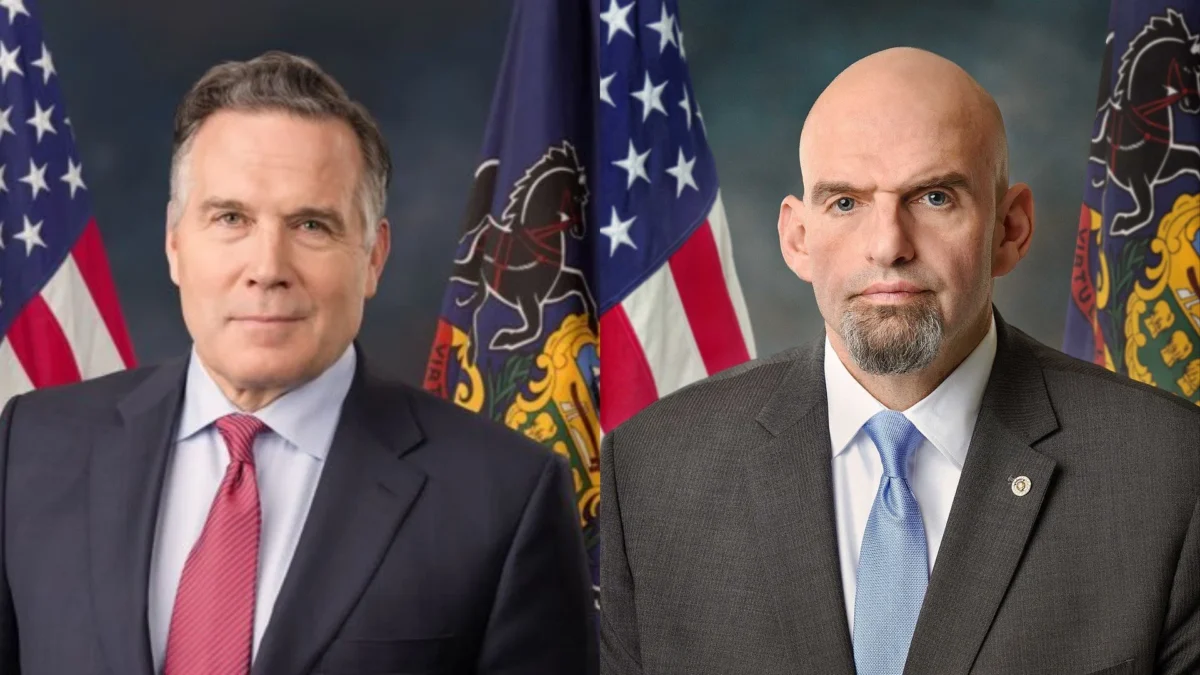 Photo by Bermix Studio on Unsplash
Photo by Bermix Studio on Unsplash
Andrew Abramczyk: Medicaid, the federal program that ate Pennsylvania
In March 2020 at the nadir of the coronavirus panic, Congress passed the Families First Coronavirus Response Act. Among its provisions was a temporary 6.2 percent funding increase for Medicaid, the joint state-and-federal program that pays healthcare costs for the poor. States including Pennsylvania were glad to take the money, believing at the time that their tax revenue was headed off a cliff.
Nothing, however, comes for free, least of all from Uncle Sam. States that accepted the money surrendered control over a crucial aspect of their Medicaid programs. So long as they take the money, they may not change Medicaid eligibility standards or remove individuals from the Medicaid rolls — even if they are found ineligible. The extra funding, and the conditions on it, will last until the federally declared health emergency ends.
Medicaid pays the medical bills of about 76 million people, nearly a quarter of America’s population. States and the federal government split the cost approximately half and half. Medicaid was intended as a safety net for the very poorest: when the program was created in 1965, it was limited to welfare recipients. Progressives have since come to see it and Medicare, its sister program for the elderly, as the germ of government-funded healthcare for the whole country. They have expanded the client pool accordingly.
Pennsylvania would have done well to refuse the extra Medicaid funding in the coronavirus bill, since the costs of the requirements appear to exceed the money being offered.
According to records requests filed by the Foundation for Government Accountability, eligibility re-determination has been delayed for hundreds of thousands of people in every state. Meanwhile, the economy bounced back quickly from last year’s sudden shutdown, and many people’s financial situation has improved — which means state taxpayers are probably paying the bills for large numbers of ineligible people.
There is nothing compassionate about this federal packing of the Medicaid rolls: quite the opposite. Medicaid gets rationed via waiting lists. The presence of extra recipients delays care for the truly helpless, like individuals with brain injuries and developmental disorders.
Nothing comes for free — least of all from Uncle Sam.
Even so, the Biden administration is using all available means to maximize enrollment. One month prior to the Families First Act, on January 28, 2020, Biden signed an executive order pertaining to Medicaid. Citing coronavirus as justification, it ordered the federal government to review any outstanding state waivers that might impede increased access to the program.
Waivers give individual states permission to change their Medicaid programs. The Trump administration granted several of them. Waivers for some states (but not Pennsylvania) allow for work and community service requirements, nominal premiums and cost-sharing to build a sense of client ownership, as well as temporary lockouts as a penalty for fraud. Permanent lockouts are not permitted, even in the case of fraud.
The Biden executive order put states on notice: even if the health emergency declaration is lifted next year, any state efforts to tighten eligibility, even in ways previously approved, could be reversed by Washington.
Washington is also working to pull middle class families into its orbit. The $1.9 trillion American Recovery Act of March 2020 expanded eligibility for private insurance subsidies under the 2010 Affordable Care Act (the ACA, or “Obamacare”) and capped insurance premiums. That the Congressional Budget Office estimated the cost of this expansion at $35 billion was apparently no deterrent. Just about anything in a $1.9 trillion bill looks insignificant: such is the political genius of massive “stimulus packages.”
Coronavirus has little to do with any of this. Maximum coverage makes for a growing constituency and expanded political power. The formula is as old as democracy itself: sign people up for a program, encourage them to use it, and denounce any possible rollback as an attack on the users themselves. Not every progressive thinks in this cynical way, but every good politician does.
Pennsylvania’s Medicaid burden
If maximizing the use of government programs was the goal, federal healthcare policy has been wildly successful: Medicaid enrollment has been a hockey stick graph upward during the Biden presidency, and it has increased about 25 percent since 2014. Enrollment in Pennsylvania has grown similarly: 2.8 million Pennsylvanians, about one in five, are now on Medicaid. Public health — the putative goal — is meanwhile going in the wrong direction. Mortality among white men is rising outright, a phenomenon heretofore unthinkable in the first world.
The cost of Medicaid is just an abstraction for the federal government, which prints its own money and can borrow at less than 1.5 percent (at least until inflation causes interest rates to increase). States are different. They must balance their budgets every year. In Pennsylvania, Medicaid is devouring everything else. Medicaid is close to one quarter of the state budget, and its share is increasing.
Medicaid is close to one quarter of Pennsylvania’s state budget, and its share is increasing.
Medicaid spending has grown, on average, by more than ten percent annually for the past five years. This leads to a crowding-out effect: sixty cents of every new state spending dollar over the last five years was for Medicaid.
Enrollment trends are unsustainable. For every additional worker that Pennsylvania added to its workforce since 2010, it has enrolled at least three people in Medicaid, according to the Commonwealth Foundation. Pennsylvania spent about $12,300 annually per Medicaid recipient, the third highest in the nation according to the federal Centers for Medicare and Medicaid Services. The centers also warn that Pennsylvania’s data quality is of “high concern.” Pennsylvania’s costs skew high in part because of the state’s large elderly population. New Jersey, no great model of financial management, spends about $10,000 per head. The national median is $8,400.
A broken national system
State governments cannot change a broken national system. Costs are soaring not only due to program expansion, but due to an absence of normal incentives. Simply stated: every actor in the system, except the ultimate taxpayer, can pass the costs to somebody else.
Nobody involved with Medicaid, or with any subsidized American healthcare, has cost management as a main incentive. The states have only limited control of their own programs, being constrained by federal requirements as discussed above. Patients often have no financial stake, neither benefiting from low prices nor being harmed by high prices. Medical practitioners seek to bill the government, or insurance companies, for the most expensive services they can get away with. The federal government subsidizes private insurance and tries to contain Medicaid costs by paying low reimbursement rates, but the former effort just pushes costs higher and the latter makes it harder for Medicaid patients to get treated.
State governments cannot change a broken national system. The last big attempted fix at the federal level was Obamacare. It focused on one big, thorny problem: the fact that chronically sick people are not insurable on commercial terms. In trying to solve that problem, the law created several others. It expanded Medicaid to tens of millions of able-bodied people and made every legally allowed health insurance plan comprehensive, and thus unduly costly. Obamacare outlawed the more basic and affordable insurance that many healthy people would prefer given a choice.
The current American healthcare system thus perpetuates a strange arrangement whereby insurance companies pay people’s routine medical costs, instead of just catastrophic ones. This causes cash prices, as opposed to the special negotiated prices paid by big insurers and the government, to be artificially high. The current system increases costs for the uninsured.
READ MORE — Andrew Abramczyk: To fix transportation, we have to prioritize it
Absent big changes in Washington — which seem unlikely following Congressional Republicans’ failure to “repeal and replace” Obamacare in 2017— states must defend their budgets the best they can. One impactful, possibly even bipartisan, initiative for Pennsylvania to try would be a major push against fraud. The federal Government Accountability Office flags Medicaid as one of the most concerning programs in all of government with respect to fraud. The GAO estimates that twenty one cents of every federal dollar spent on Medicaid is an improper payment, meaning it was erroneous, duplicative or fraudulent. Such a high number is disgraceful, but it shows the opportunity for major savings.
Pennsylvania should implement a generous bounty program for fraud whistleblowers, and should crack down particularly hard on overbilling and overtreatment by hospital systems, as well as abuse of Hospital Presumptive Eligibility (HPE), a rule by why which hospitals can bill the taxpayer first and verify a patient’s Medicaid eligibility later. Less than half of people claiming HPE are ultimately enrolled in Medicaid, according to the Foundation for Government Accountability.
Punishing fraudsters and corporate hospitals is a winning political strategy, and an ambitious auditor general or attorney general could make his career with some successful investigations.
At an absolute minimum, the next Pennsylvania governor should refuse further Medicaid “help” from Washington of the type recently given by the Biden administration. Medicaid is eating the state budget, and Pennsylvania needs maximum flexibility to fight back.
Andrew Abramczyk is a writer and financial analyst based in Pennsylvania.




I fail to see why more people having access to healthcare either through State Governments expanding access to Medicaid or from the Coronavirus Bill is a bad thing. Every study I’ve read about Medicaid expansion says that it has been a net positive for residents health outcomes from fewer premature death among older adults, increases in early stage cancer diagnoses, greater access to mental health care, reducing health disparities, reduction in share of low-income adults struggling to pay medical bills, greater access to mental health care and the list goes on.